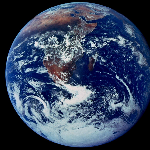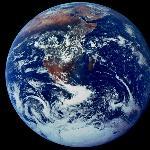
Reversing Climate Change with Ocean-healing Seaweed Ecosystems by Ocean Foresters
 Angélica Lara P.r. Jun 18, 2014 05:35 | Proposal contributor
Hi,
Thank you for your proposal, I really like it. I would like to know if you have an idea about the estimated cost of this project?
Regards
|
 Jim Stewart Jun 20, 2014 11:15 | Proposal contributor
Dear Angelica,
Thanks for asking the all-important cost question. The only way to realistically save the planet is to reverse global warming with a totally sustainable plan (see our section on benefits).
The Ocean Foresters plan removes CO2 while generating profits, jobs, and tax revenues. In fact, in many parts of the world our projected expenses are less than current fossil fuel prices. The island of Fiji is interested in our approach so they can eliminate the balance of payments deficit caused by importing expensive diesel fuel to make electricity.
And as fossil fuel costs inevitably rise (because it is getting more and more expensive to drill and remove less and less oil and natural gas), we will undercut fossil fuels everywhere.
Please see the spreadsheet and cost analysis just added to our entry.
Also please join our team and contribute your ideas.
Thanks,
Jim Stewart, PhD, for the Ocean Foresters team
|
 Mark Johnson Jun 21, 2014 07:55 |
The best project summary statement with graphics to boot so far I've seen. Super well done. Suggest you add this to your references and subscribe....
http://www.worldoceanobservatory.org/index.php?q=world-ocean-radio
|
 Saravanan Dhalavoi Pandian Jun 21, 2014 03:20 |
Hi,
Thank you so much for the interesting concept and proposal. Your proposal is very well detailed and structured. Just couple of points to add clarity:
1. What would be area required to harvest seaweed to sequester 19 billion tCO2 per year and what would be the cost?
2. The hydrothermal process to remove water/CO2 from the seaweed and convert in to fuel would require a substantial quantity (which I guess) of energy. Did you calculate the net environmental benefits?
3. What would be the environmental impact on the aquatic life / ecosystem if we grow seaweed on huge areas in the sea/ocean?
All the best!!
|
 Mark Capron Jun 28, 2014 01:26 | Proposal contributor
Dear Saravanan
1. The area required to capture and sequester 19 billion tons of bio-CO2 per year will vary from about 9% of the earth’s ocean surface to produce only biomethane, to as little as 5% if we use the hydrothermal process to produce liquid fuels. 9% of the oceans is about 32 million square kilometers. The reason it is so huge is that it takes a lot of biomass to absorb the amount of CO2 released by burning fossil fuels. Every year, humanity burns over 500 times the total CO2 absorption capacity of the entire current biomass of the earth (doi: 10.1023/A:1026391317686).
There would be no cost due to the profit from the energy, food, and biodiversity production. The projected profit from the sale of the natural gas (biomethane) plus food, fertilizer, and other products would be immense, in the hundreds of billions of dollars annually (comparable to the current profits of the fossil fuel industry, which ocean forests will replace). There is no cost for the nearly pure bioCO2 capture, because that is incidental to the biomethane production. There is a small cost for storing the bioCO2, which, as explained in our “Costs” section, could be covered by profits from the sale of biomethane if, as predicted, fossil fuel prices rise.
2. The hydrothermal process is just now coming out of laboratories with differing estimates of efficiency. The U.S. Pacific Northwest National Laboratory expects the process will scale to better than 85% efficiency (15% of the energy available in biomass is consumed as the biomass is converted to oil and gas.) The heat energy to get the biomass up to 350ºC (without burning our biomethane, which releases CO2) could be provided by either concentrating solar thermal or solid oxide fuel cells. But all this has capital costs and perhaps much more time for mass-production than does the anaerobic digestion system, which is ready to deploy now.
We have calculated the net environmental benefits of our anaerobic digestion-based ecosystem, see papers at OceanForesters.org. We have not yet calculated the net environmental benefits of a hydrothermal-based ecosystem. However, our current understanding of hydrothermal processes suggest the net environmental benefits will be more because 100% of the carbon in the biomass is converted to oil and gas and the remaining nutrients (nitrogen, phosphorous, potassium, calcium, etc.) are more easily recycled. Anaerobic digestion converts about 50% of the biomass to gas and the remaining solids and water are mixed with the nutrients.
3. The economics of the anaerobic digestion-based ocean forest ecosystem tend to increase ocean primary productivity and biodiversity. This is because the inexpensive anaerobic digestion containers favor “inefficient” forestry. We are not driven toward a mono-culture or even a tightly confined culture. Our estimate of 9% of the world’s ocean forest is large because it is “loose”, not as loose as the Sargasso Sea, but much less dense than typical land-based micro-algae-to-oil operations. That is why ocean forests will restore ocean ecosystems and increase fish populations by expanding the natural “ocean nurseries” that are currently provided by kelp and other seaweed forests.
We welcome more questions.
|
 Jasmine Hyman Jul 3, 2014 12:03 |
Dear Global Plan,
Thank you for your entry in the global plan contest! Your proposal is, indeed, global.
Please note that — unlike other Climate CoLab contests -- two central elements of this global contest is for authors to (1) link together proposals from other contests into an integrated plan for the world as a whole, and (2) complete the climate model for their proposal’s impact on climate change and our economic systems.
Could you make this amendments to your (promising) proposal?
Thanks
Jasmine.
|
 Mark Capron Jul 5, 2014 11:59 | Proposal contributor
Jasmine,
Yes.
1. Running out of space for linking other proposals into an integrated plan with logic.
2. Maybe we don't understand how to complete the climate model? We went to the model. Selected the indicated inputs. Examined the output. Described all that in the "Model" box. Should we have more automated output show automatically in the box? Are we allowed to input a lot more than the limited selections? I didn't see an input option for "replace all fossil fuel use at costs similar to fossil fuel by 2050" or "Remove 17 billion tons of CO2 per year from air and ocean with a minor increase in energy costs for a couple centuries." Can we convert the model results into a picture to include in our "Model" box?
|
 Delton Chen Jul 14, 2014 09:31 |
Hello Ocean Foresters
I have linked your proposal in Global 4C as being a project that could earn rewards for sequestering carbon.
I like your proposal.
Best regards
Delton Chen
|
 Mark Capron Jul 31, 2014 08:28 | Proposal contributor
Delton,
Thank you. I also like the 'reward' approach of Global 4C. The reward might fund removing CO2 from air and water after all fossil fuel use (and tax income therefrom) stops. Without the reward, we have to count on out-competing fossil fuels to the point where all the extraction infrastructure becomes too expensive to revive. Then we up the cost of our biofuels to subsidize the continued removal of CO2 back to non-dangerous levels.
We linked to Global 4C with the above explanation.
|
 Mark Capron Jul 31, 2014 08:04 | Proposal contributor
Scientists are discussing yet another sudden GHG-triggered disaster which suggests our Global Plans need to be even more robust in the face of rapid Climate Change than we have been considering.
Yet another GHG-triggered disaster would be a repeat of the Laki, Iceland volcano eruptions of 1783. These eruptions appear to have caused drought-based starvation as far as Egypt and Japan in addition to cold wet starvation on and closer to Iceland. See http://volcanism.wordpress.com/2011/06/08/on-this-day-the-laki-eruption-begins-1783/. The scenario is:
1. The weight of Iceland's glaciers suppress volcanic eruptions.
2. GHG-warming melts the glaciers and relieves the restraining pressure.
3. The volcanoes erupt sooner then they would if the glaciers were intact. In 1783, the volcanoes blew even with all the ice pressure. While, it may take 200 years for the glaciers to disappear [http://all-geo.org/volcan01010/2012/01/icelands-melting-glaciers-and-other-stories/], the geologically sudden release of confining pressure could trigger an eruption any year now.
Ocean Forestry can continue healing ocean ecosystems while delivering food and energy even during the fresh water supply and generally cold conditions of a Laki eruption. (There may be a small drop in production due to the slight decrease in solar energy reaching Northern Hemisphere oceans.)
|
 Mark Capron Aug 3, 2014 12:06 | Proposal contributor
Dear Dr. Malone,
Your judges (all categories) might want to read Michael Shermer's "ClimeApocalypse! Or just another line item in the budget?", pg 79, Scientific American, August 2014.
He mentions two books. Important take-away concepts for Climate CoLab:
1. Historians of Science at Harvard and California Institute of Technology posit several causes for failure to act on Climate Change. Causes important to avoid in Climate CoLab: a) reductionism that prevents scientists from understanding holistic systems; and b)disciplinary narrowness that restricts cross-field communication between scientists.
These two causes are addressed when decision makers and funding agencies move from "silo" funding to "ecosystem" funding. Funding R&D to advance Ocean Forestry would be an example of ecosystem funding.
2. Bjorn Lomborg reports on the Copenhagen Consensus of 50 economists for the most cost-effective use of funding. Climate Change is barely a sub-mention in top ten, in order: malnutrition interventions, malaria treatment, childhood immunization, deworming of schoolchildren, tuberculosis treatment, research and development to increase crop yields, early-warning systems for natural disasters, surgical capacity, and hepatitis B immunization. R&D for solar management geoengineering was number 12. R&D for green energy was number 17.
This study suggests that really effective Climate Change solutions will also address humanity's other issues. Ocean Farming (aka Marine Agronomy, a step toward Ocean Forestry) addresses malnutrition and increasing crop yields. Ocean Forestry addresses early warning for natural disasters (Ocean Farming works with artificial breakwaters and reefs which can mitigate some natural disasters. Ocean Forestry will place many more sensors in the ocean to provide early and more precise warning of weather, wave, and tsunami), carbon removal geoengineering, and green energy.
|
 Mark Capron Aug 11, 2014 11:53 | Proposal contributor
Ocean Forests are designed such that the economics should favor an ocean-healing ecosystem. The following is a discussion of the kinds of science anticipated for Ocean Forests.
Ocean Research Infrastructure in 2030 with Ocean Forestry
The National Research Council’s Critical Infrastructure for Ocean Research and Societal Needs in 2030 (Report) recommends funding future ocean research infrastructure primarily based on the anticipated societal benefit of the research. The Report diagrams the links between ocean infrastructure, scientific research, relevant societal objectives, and benefits with achieving these objectives.
We (all 7 billion of us) have the opportunity to go beyond “research providing benefits” by envisioning a new ocean ecosystem. Like most natural ecosystems it would harness sunlight and photosynthesis and work with the conditions available in our oceans. Most oceans are nutrient deserts, not because there is no nutrient input, but because the nutrients sink below the photosynthesis zone too quickly. If our research enables us to capture and recycle nutrients quickly, our new ecosystem could sustain biodiversity and primary productivity in what are now nutrient deserts. If our research enables us to extract the carbon while recycling the nutrients, our new ecosystem could provide renewable energy and sequestration ready carbon indefinitely. If our new ecosystem is designed with research infrastructure, research and ecosystem improve synergistically.
Our new ecosystem will represent a quantum jump in how humans care for and research oceans. For the past million years, humans have taken from ocean resources as hunter-gatherers or miners. Within the last few decades we have been trying single species feed-lots with the same issues as terrestrial feed lots. Our ocean research infrastructure has developed from our hunter-gatherer perspective.
In this new ecosystem, research is not an afterthought. Research generates our energy and food producing ecosystem. Our energy and food producing ecosystem funds more research. It should be possible to arrange our new research-food-energy-biodiversity-ecosystem like a managed forest. In an ocean forest, primary productivity and biodiversity develop naturally while we extract a small portion of the sun’s energy as a gas or liquid fuel. The ecosystem will have human components, connections, transport systems and the like which are ideal platforms for research sensors. As the ecosystem expands, income from the sustainable products funds instrumenting huge volumes of the ocean.
Ocean Forestry Research Opportunities
Ocean Foresters, December 2012
None of the research opportunities mentioned below are their own islands. Everything is relative to everything else. The questions apply to the whole ecosystem. For example, the nutrient recycling has to grow an ocean forest that can be harvested and processed in order to return nutrients for more forest growth.
Ocean Forestry is explained by Dr. Antoine N’Yeurt in “Negative Carbon via Ocean Afforestation” available at http://www.sciencedirect.com/science/article/pii/S0957582012001206.
Ecosystem research opportunities
What are the interconnections and interrelationships of all the questions below?
Can we map all the possible large-scale OCEAN FORESTRY locations with overlays of complementary and competing interests for the marine resources (transportation, hunting-gathering, oil mining, etc)
Legal and Global Policy research opportunities
The OCEAN FORESTRY ecosystem can be an active marine sanctuary where solar energy powers the recycling of seaweed growing nutrients. The growing seaweed counteracts ocean acidification by pulling CO2 out of the ocean rapidly. The tiny shell creatures in passive marine sanctuaries are already dissolving and are doomed to extinction. Their death means the slow death (this century) of passive marine sanctuaries without some form of intervention. (We could confirm the locally lower pH by studying the Sargasso Sea.)
Might OCEAN FORESTRY ecosystems be protected as active marine sanctuaries where the agencies operating the active sanctuary manage the fishing, farming, and forestry rights? How else to manage food production from the OCEAN FORESTRY ecosystem for millennia? Is this best done with transferrable quotas?
Do OCEAN FORESTRY ecosystems in the active marine sanctuary role need liability insurance or protection from thieves? Suppose thousands of tons of seaweed and trapped fish wash up on an island beach. Should the OCEAN FORESTRY operator compensate the island tourism industry? Or does the island beneficially salvage the “escaped” OCEAN FORESTRY products with or without compensating the OCEAN FORESTRY?
Microbial research opportunities related to anaerobic digestion
How do the rate and completeness of ocean anaerobic bacterial digestion on seaweed at ocean conditions differ from the terrestrial situation? Are the Migliore results for digesting seaweed in higher-salinity-than-ocean water universal? (Migliore G., Alisi C., Sprocati A.R., Massi E., Ciccoli R., Lenzi M., Wang A., Cremisini C., (2012) "Anaerobic digestion of macroalgal biomass and sediments sourced from the Orbetello Lagoon, Italy", Biomass and Bioenergy 42 69-77)
Are there “ideal” temperatures for ocean anaerobic digestion just as there are ideal temperatures for terrestrial anaerobic digestion?
Are ocean bacteria applying different principles of molecule movement than freshwater 1-atm bacteria for anaerobic digestion? Existing research at 1-atm with freshwater suggests that higher concentrations of dissolved gas products reduce the rate of gas production. Perhaps a higher dissolved gas concentration leaves the gas molecules lingering on the cell wall longer? That is, the final rate-limiting step is the conversion of dissolved gas to gas. Vigorous agitation and lower pressure (a partial vacuum) result in a 600% increase in the reaction rate. (Finhey and Evans, Anaerobic Digestion-the Rate Limiting Process and the Nature of Inhibition, Science, 1975) Ocean pressures allow us to easily operate in a situation where the CH4 is at dissolution equilibrium, but the CO2, H2S, and perhaps others are at far higher than 1-atm concentrations while still far less than equilibrium concentrations. (Trost, US Patent 5,651,890, July 29, 1997).
If the transfer of CH4 from dissolved to gas is rate limiting, will a gas stripping molecule speed the rate of CH4 production? Trost, US Patent 5,681,890, 1997, found that the introduction of liquid propane into 1-atm, freshwater anaerobic digestion in amounts of 6 to 15% by volume of the biogas increases the biogas production rate substantially. This research was limited to the 1-atm situation where the propane initially flashes to a gas and is then dissolved from the gas bubbles. Propane and other “gases” and materials may offer more insights into molecule movement across the cell wall when the material is dissolved directly from its liquid or solid state because of the higher pressure.
Will relatively higher concentrations of dissolved bioCO2 cause the more dissolved bioCO2 to be converted to bioCH4? That is, will the microbes produce relatively more bioCH4 and less bioCO2 under ocean conditions? Seawater offers a substantial buffer to the lowering pH effects of increased dissolved CO2. However, ocean bacteria may have evolved conversion to CH4 as a defense against increased dissolved CO2 concentrations.
How does the DNA of the ocean bacteria associated with anaerobic digestion differ from the DNA of fresh water, relatively low pressure bacteria?
Fish in seawater excrete calcium carbonate pellets. Fish in fresh water do not produce calcium carbonate pellets. (Wilson et al. 2009, Contribution of Fish to the Marine Inorganic Carbon Cycle, Science) Are the bacteria in saltwater fish intestines producing dissolved CO2 and CH4? Is the dissolved bioCO2 essential to calcium carbonate production?
What are the plant nutrients remaining after the gas production, after the anaerobic digestion is completed, and how might they support expanded seaweed growth?
Hydrothermal processing research and development opportunities
Can hydrothermal conversion be accomplished more economically with the “free” pressure of the deep ocean? (Place the equipment about 2,000 meters deep.)
Macroalgae (seaweed) research opportunities
How are the nutrients recycled to foster growth of macroalgae and inhibit growth of microalgae?
What blend of algae makes the best ocean forest? (The best forest has the most sustainable blend of biodiversity, energy, food, and greenhouse gas reduction. It may differ depending on location, time of year, or multi-year cyclic event such as the Indian Ocean Dipole.)
What algae harvesting techniques and equipment contribute to the desired ocean forest with the least energy and capital cost? (Or the best use of dissolved gas, wind, wave, solar, current, geothermal, etc. renewable energy.) Reducing the water content of the harvest may allow for smaller anaerobic digestion containers. During daylight, the water around the algae can have very high dissolved O2. The dissolved O2 is helpful for aerobic bacteria to convert the recycled ammonia to nitrate. However, dissolved O2 and nitrate must be reduced without losing significant carbon before the mass of water and algae is introduced to the anaerobic digestion container.
Should the digestate be treated in a physical (or virtual) container in order to convert ammonia to nitrate before the digestate is diluted back to the ocean surface?
Is any NO, N2O, or NO2 produced during the OCEAN FORESTRY nutrient recycle. If so, is there an NH4 distribution arrangement which minimizes "bad" nitrogen while quickly converting NH4 to NO3?
What nutrients added to improve the anaerobic digestion process will also improve the growth of macroalgae, or the health of the fish feeding on the macroalgae, or the health of the predators on herbivores? For example we may add iron to the anaerobic digestion in order to intercept the sulfur from preferentially bonding with the hydrogen. Iron is often a lacking micronutrient for an algae forest. If the iron is capturing sulfur, will sulfur and iron concentrations increase or decrease primary productivity and biodiversity?
What techniques and equipment are necessary to survive extreme weather such as tropical storms (cyclones, typhoons, hurricanes), unusual cold, or unusual hot?
Is there a minimum or maximum size algal forest for optimal overall ocean health?
Can we remove bioaccumulating toxics with some aquatic plant species without losing nutrients?
How and why might algal forests in one ocean differ from those in another ocean? Do the different species have some of the same genes?
Figure 1 – Pressure-Temperature relationship for CO2 in excess of dissolve equilibrium
How do partial pressures influence the form of CO2 which is in excess of dissolution equilibrium in an anaerobic digester?
Sealife and economics research opportunities
Other than with Ocean Forestry, how can humanity ensure sustainable food, energy, biodiversity, while avoiding ocean acidification? Which sealife species complement the quadruple outputs? What species can be harvested while increasing biodiversity?
What proportion of herbivores and predators evolves? What size should they be harvested for the best long-term ecosystem sustainability?
Seeing that organisms rarely if ever stand alone, but are usually integral parts of an interwoven community, what is an appropriate target community for each oceanic region? Can we replicate or transplant already existing communities that have rich process path linking?
How can we match the fish harvesting for long-term sustainability with the commercial value of each species?
Is long-term biodiversity improved or harmed by occasional ecosystem “crashes?” The terrestrial analogy might be forest fires, bark beetles, or an excess of deer. In the ocean, the crash might be ocean acidification, or a pod of dolphins eat all the herbivores, or a toxic algal bloom, or a large storm sweeps the macroalgae onto a beach.
Can we remove bioaccumulating toxics from the Ocean Forestry ecosystem without losing crucial quantities and types of nutrients? (Toxics: mercury from coal burning, plastic trash particles, etc.)
Is there a minimum or maximum size algal forest and associated fish harvest for optimal overall ocean health?
If some macro algae are diverted (outside the OCEAN FORESTRY ecosystem) to chemical and feed production, say through bio-refineries, how does this impact: biodiversity; economics; primary productivity; etc.
Ocean Geophysicist research opportunities
Is there more or less water evaporation from large open-ocean macroalgal forests? Higher or lower water temperatures relative to areas which remain nutrient deserts?
Do large seaweed forests induce changes in ocean vertical mixing or ocean currents on either the local or the global scale? If there are changes, are those changes reinforcing or counteracting the changes induced by increased concentrations of greenhouse gases?
Do large macroalgal forests induce local or global changes in atmospheric pressure and wind patterns? Are there changes in storm frequency, intensity, or waves? If so, are the changes reinforcing or counteracting the changes induced by increased concentrations of atmospheric greenhouse gases?
Do algal forests induce micro climate effects, which are common with regular forests on land? And if so, what are these effects likely to be? (Note that large terrestrial rainforests such as the Amazon create their own rainy climate with rapid evaporation and precipitation for quick water cycling.)
If Ocean Forestry is undertaken in open-ocean currents, are these currents spatially stable or predictable enough to enable efficient harvesting down-current?
How far off track will afforested macroalgae be driven by storms, and will this allow efficient harvesting?
How will increased greenhouse gas concentrations change the velocity of ocean currents? Can these changes be predicted to guide Forestry and harvesting?
Ocean current monitoring via up-looking Doppler sonar has become commonplace as have autonomous transmitting floats and vehicles. To what extent should those employing the data (fishing fleets, OCEAN FORESTRY operators, navies) contribute to the installation and operation of data gathering?
Undersea robotics research opportunities
Remotely operated and autonomous underwater vehicles (AUV) have seen extensive development in recent decades, thanks to funding from the offshore oil & gas industry. However they remain focused mainly on data gathering and light repairs. Can AUV’s be enhanced to perform complex heavy ocean forestry and carbon storage operations at -1,000 meter and -3,000 meter depths?
How can we extend AUV power to obtain maximum deep water operating times? Improved batteries? Liquid-to-gas CO2 expansion? Fuel cells running on stored methane and oxygen or scavenging dissolved oxygen? Mini-geothermal power plants on hot seafloor vents? Microbial fuel cells generating energy from marine snow?
Inertial navigation has become cheaper and more available, but it suffers from exponential Markov drift in all 3 dimensions. What navigation recalibrating systems might be deployed for in support of deep water projects?
Other – Please share any issues you foresee which need to be addressed before Ocean Forestry could be scaled-up to have climatically-significant effects with the Ocean Foresters.
|
 Mark Capron Aug 11, 2014 11:52 | Proposal contributor
Thoughts on Judges’ comments for a finalist in Industry – Industrial GHG Reduction, Sustainable Growth and the IMBECS Protocol by Marine BECCS:
1. International cooperation hurdle – The fact that international cooperation is a challenge is a good indication this proposal has the scale needed to address Climate Change. Only proposals with small impacts won’t require international cooperation. This concern is also ironic because Climate CoLab’s mission is to change Industry away from Business as Usual. Business as Usual proceeds more as international competition than international cooperation. Note all the countries competing to claim Arctic Ocean oil and gas resources as the ice melts. Note the Canada telling the United States that tar sands oil will be burned with or without the Keystone Pipeline.
More important, the first few million km2 operations will likely be within one country’s Exclusive Economic Zone: Fiji’s bays, Pacific Island lagoons, the Gulf of California, the Salton Sea, the Mediterranean Sea, (if we implement the Comments 3 & 4 version of Adaptation – Stop Groundwater Plan – Save $8 Billion), etc.
2. Environmental Feasibility at scale – The fact that long-term environmental feasibility is a concern is a good indication this proposal has the scale needed to address Climate Change. Even small-scale Industries like wind energy have long-term environmental issues at the necessary scale. At the necessary scale, wind energy changes global wind patterns, ocean wind energy changes the movement of nutrients in coastal waters, etc. Everything humans do at the necessary scale comes with questions on long-term environmental sustainability.
Ocean Forestry has peer-reviewed scientific basis suggesting its long-term environmental sustainability. Compare Ocean Forestry to Business as Usual with associated ocean acidification and all the short- and long-term concerns which Climate CoLab seeks to address. Climate CoLab as an opportunity here to demonstrate how to apply precautionary principles in a manner which does not favor Business as Usual.
3. Technical Feasibility at scale – Ocean Forestry is several whole new industries and sub-proposals to completely replace fossil fuels and even reduce CO2 concentrations. While Climate CoLab’s General Plan is in the “box” of reducing emissions and sub-proposals within Climate CoLab. Ocean Forestry is in a larger “box” of “reducing concentrations” and more sub-technologies which encompasses the smaller “box” of “reducing emissions” and Climate CoLab sub-proposals.
Because it is a suggestion of several whole new industries in the larger “box”, one should anticipate the need to “learn by doing” on many of the sub-industries (component processes). When the fossil oil industry began, oil beneath the oceans was not considered as “reserves” because the technology was not available. Oil and gas in shale plays only recently entered the “reserves” because hydraulic fracturing became economic. Similarly for tar sands oil. Like most industries the fossil fuel industry started with the low-hanging fruit and worked its way up the tree.
Climate CoLab seeks to inspire more “thinking ahead” than typical when starting new industries. In addition, the urgency of Climate Change issues suggests humanity should “leap right into the deep water”. We should work out the technical details of Ocean Forestry as if our survival depended on it. 400 ppm of CO2 already dooms us to 10-20 meters of sea level rise over a few centuries (and similarly large disasters from other effects of humanity’s geologically sudden emission of greenhouse gases). Thinking ahead, humanity does not have the luxury of growing the capabilities of Ocean Forests over a century.
|
 Mark Capron Aug 20, 2014 10:15 | Proposal contributor
Thank you again for the inspiration of including a Global Plan with objective: “The contest seeks an overall plan for the world as a whole.” How you envisioned accomplishing the objective: “A key aspect of the contest is that authors are invited to create integrated proposals…” Your definition for “integrated”: “… bring together proposals from other contests (implied the “other contests” were other categories within Climate CoLab, not for example the Paul G. Allen Foundation’s Ocean Challenge, the February 2014 Ocean Sciences Meeting, proposals to competitive U.S. Department of Energy Funding Opportunity Announcements, the Global Islands Innovation Challenge, etc.) …”
Your objective is a great attempt to increase effective Collective Intelligence in that people from many sub-proposals would work together to knit a coordinated global plan. For example, people who knew to worry about the limitations on fresh water and terrestrial agriculture and forestry could join with people who knew the capacity of the oceans to heal themselves while providing food and freshwater security. That is, terrestrial-focused people from your Land Use category could have joined with ocean-focused people from the same category in your Global Plan category. Unfortunately, that appears to be very difficult to accomplish over a few months.
However, the Ocean Foresters already knit together multi-geographic, multi-disciplinary proposals and specifically terrestrial-ocean agriculture and forestry. Some sub-proposals originated outside Climate CoLab, some are from within Climate CoLab. It becomes difficult to identify which is which. Ocean Foresters have been working on our Collective Intelligence for years. Climate CoLab has been very helpful for spotting and filling in gaps.
|
 Climate Colab Aug 20, 2014 08:52 |
The proposal could address the scale-up issues in more detail: how to move from demonstration, to pilot, and full scale implementation. It advocates for policy initiatives at the UN and in Congress, but does not lay out in enough detail how the political will to achieve these policy goals will be mustered (for example, will advocacy by the SIDS and other vulnerable nations be enough to prevail in the UN, or must other countries back the proposed initiative as well?. Benefits section is broad brush, without making a strong enough case that the proposed actions can achieve the scale of emissions reductions anticipated. The list of sub-proposals is long but there is not a strong explanation of why they were selected. It might be better to focus on a smaller number of sub-proposals and make the case for their link to the main proposal in more depth.
|
 Stuart Hodson Sep 27, 2016 01:16 | How about converting the seaweed oil (triglycerides - glycerol and three fatty acid chains) into Bioresin? This can substitute for petrochemically derived resin (urea formaldehyde, MDI) and can be used for building materials e.g. engineered wood products, and as a substitute for steel and some concrete applications. The CO2 is fixed for the life of the products (determinable) and not released upon combustion (as with biodiesel use). It is also a higher value product. Cambridge Biopolymers has been able to do this for 16 years and has produced many samples. http://www.cambridge-biopolymers.com/index.htm I met Tim Flannery who greatly supports ocean seaweed afforestation. I don't understand why the rest of the world has not yet woken up to this - including IPCC, Royal Society US government..... The leading alternative geoengineering proposal is releasing SO2 into the stratosphere!! |